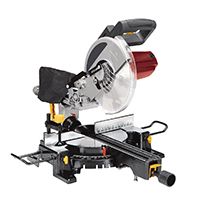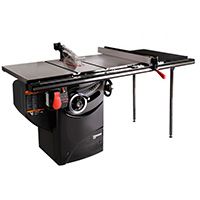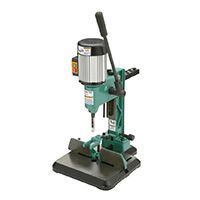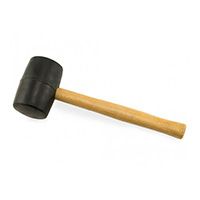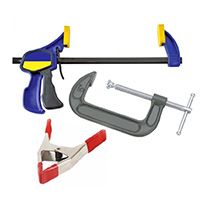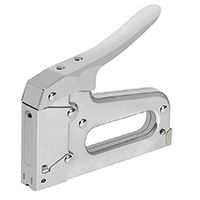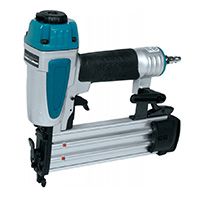We may be compensated if you purchase through links on our website. Our team is committed to delivering honest, objective, and independent reviews on home products and services.
Project details
Skill
Cost
Estimated Time
Not only does a screen door serve a functional purpose, but it can also be customized to reflect your home’s unique character. Whether you’re dealing with an older door that needs updating or starting from scratch, understanding the materials and tools required is critical to success.
This project requires some woodworking skills and specialized tools, resulting in a beautiful, durable door tailored to your home’s style. In the video, This Old House general contractor Tom Silva demonstrates constructing and installing a custom screen door, showcasing techniques to ensure a perfect fit. Retrofitting older doors with modern hardware can be challenging, but with the right guidance, it becomes a manageable task.
Custom Screen Door Materials
Before starting your project, gather these essential materials:
- Brad nails
- Screening material
- Surface-mounted screen door hardware
- Victorian corner brackets
- Weather-resistant screws
- Wood glue
- 5/4″ x 8″ x 8′ straight grain fir boards
- Screen door compressors
Choosing the right materials for your screen door is crucial for ensuring its durability and appearance. While these materials may appear straightforward, their quality and compatibility with your existing door frame can have a significant impact on the project’s outcome. Premium materials may offer better longevity and fit for the custom features you wish to include.
Tools to Build a Custom Screen Door
To build and hang your custom screen door, you’ll need the following tools:
- Brad nailer
- Clamps
- Drill driver
- Miter saw
- Mortising machine
- Rubber mallet
- Staple gun
- Table saw
- Track saw
- Utility knife
These tools help make precise cuts, secure fittings, and ensure the overall quality of the screen door. Though some might be specialized, having access to them will streamline the process and lead to a more professional-looking result. Consider renting or borrowing tools if they’re not part of your regular collection.
Preparing the Door Frame
Creating a sturdy frame is crucial for a long-lasting screen door. Follow these steps to prepare your door frame:
- Cut the boards to size using a miter saw, allowing an extra 2″ for the rails to accommodate half-lap joints.
- Use a table saw to cut rabbets and half-laps on all stiles and rails.
- Mark the locations for mortise and tenon joints on the stiles and rails.
- Create mortises using a mortising machine.
Tom recommends using a combination of half-lap joints and floating tenons to prevent warping, which is especially important for exterior doors. Using these methods ensures that the door remains resilient against environmental changes, maintaining its structure and appearance over time.
Assembling the Door
With your frame pieces prepared, it’s time to assemble the door:
- Apply wood glue to the joints and fit the pieces together.
- Use a rubber mallet and shims to ensure a tight fit.
- Clamp the door assembly and allow the glue to dry completely.
- Once dry, trim any excess material from the bottom of the door using a track saw.
The assembly process requires attention to detail to ensure the pieces fit correctly and form a smooth surface. Proper drying time and clamping are essential to maintain the door’s integrity, reducing the risk of future gaps or misalignment.
Installing Hardware and Screen
After the door frame is assembled, you can add the hardware and screen:
- Install corner brackets around the top opening of the door using weather-resistant screws.
- Attach the screen by first placing filler pieces of wood under the top and bottom of the door.
- Clamp the middle section of the door to a workbench, causing a slight bow.
- Unroll the screening material and position it tightly against the door.
- Staple the screen in place using a staple gun.
- Trim excess screening with a utility knife.
- Release the tension from the clamps.
To hide the staples, use the cutoffs from the half-lap and rabbet cuts as trim pieces. Miter the edges of these pieces and secure them to the door using a brad nailer. Installing the screen securely helps ensure the door’s longevity, preventing it from sagging or tearing under tension.
Fitting the Door to the Opening
Ensuring a proper fit is crucial for your screen door to function correctly:
- Hold the door in the opening and mark it for a tight fit.
- Cut the door to size using a track saw, focusing on width first, then height.
- Tilt the saw blade by a few degrees when cutting to ensure a snug fit on the outside while maintaining easy operation.
Checking the fit of the door frequently during this stage will save time and prevent unnecessary adjustments. Each cut should be measured and approached cautiously to avoid any discrepancies that might compromise the door’s alignment or movement.
Hanging the Door
With the door properly sized, you can now hang it in place:
- Attach the hardware by drilling pilot holes and screwing it onto the door.
- Hang the door and secure the hinges to the jamb.
- Add compressors to both the top and bottom of the door for smooth operation and a tight seal.
Attaching the hardware correctly is crucial for the door’s performance. Any misalignment can lead to rattling or improper sealing, which can be frustrating for daily use. Compressors provide the additional benefit of minimizing noise and creating a solid closure against environmental airflow.
Finishing Touches to the Custom Screen Door
To protect your new screen door from the elements:
- Apply a weather-resistant finish to the door.
- Consider adding a door closer or spring to ensure the door closes automatically.
- Install a handle and latch for easy operation and security.
Applying the right finish not only enhances the door’s appearance but also extends its lifespan by protecting it against moisture and UV exposure. A well-thought-out finish matches the decor and style of the home, integrating seamlessly into the exterior design.
Screen Door Customization Options
One of the benefits of building a custom screen door is the ability to tailor it to your home’s style. Consider these customization options:
- Paint or stain the door to complement your home’s exterior color scheme.
- Choose decorative corner brackets or other ornamental hardware to match your home’s aesthetic.
- Select a screen material that suits your needs, such as fine mesh for insect protection or heavy-duty screening for durability.
Personalizing your screen door allows it to become a feature of your home rather than just a functional item. By selecting materials and finishes that reflect your individual style, your door serves both as protection and as an expressive piece of design.
Maintenance Tips for Your Custom Screen Door
To keep your custom screen door in top condition:
- Regularly clean the screen with a soft brush and mild soap solution.
- Inspect the door seasonally for any loose screws or hardware and tighten as needed.
- Touch up the finish annually to protect the wood from moisture and UV damage.
Maintenance is essential for preserving the door’s function and appearance. By routinely inspecting and cleaning your screen door, you prevent minor issues from escalating into significant concerns while keeping it looking new and functioning smoothly.
Resources:
To build the frame of the door, Tom used 5/4″ x 8″ x 8′ straight grain fir, which was provided by Baird Brothers Fine Hardwoods. For exterior doors, Tom finds it very important to prevent the wood from warping in any direction, which is why he recommended using a combination of a half lap and a floating tenon for the joinery. To make those cuts, he used a Domino Joiner, which is manufactured by Festool and a Jobsite Saw Pro, which is manufactured by SawStop.
To secure the boards together, Tom used wood glue by Gorilla Glue. To trim the door to size, Tom used a TS 55 circular saw, which is also manufactured by Festool.
The corner accent brackets and the antique hardware were either found or salvaged by the homeowner, but similar products can be found online, at hardware stores, at specialty woodworking shops, or at antique sales/salvage yards. The hinges and the screen door compressor can both be bought at home centers. In this case, Tom used heavy duty screen door hardware to handle the weight of the large door, and two compressors on the top and bottom of the door to control the swing of the heavy door and to ensure it closed tightly.
The screening material they used for the door can be found at any home center. Tom recommends using clamps to slightly bow the door during the installation of the screen to ensure a tight fit. To secure the trim pieces over the screen, Tom used a 20V Max Cordless Brad nailer, which is manufactured by Dewalt.
Shopping List:
5/4″ x 8″ x 8′ straight grain fir
Wood glue
Victorian corner brackets
Weather resistant screws
Screening
Brad nails
Surface mounted screen door hardware
Screen door compressors
